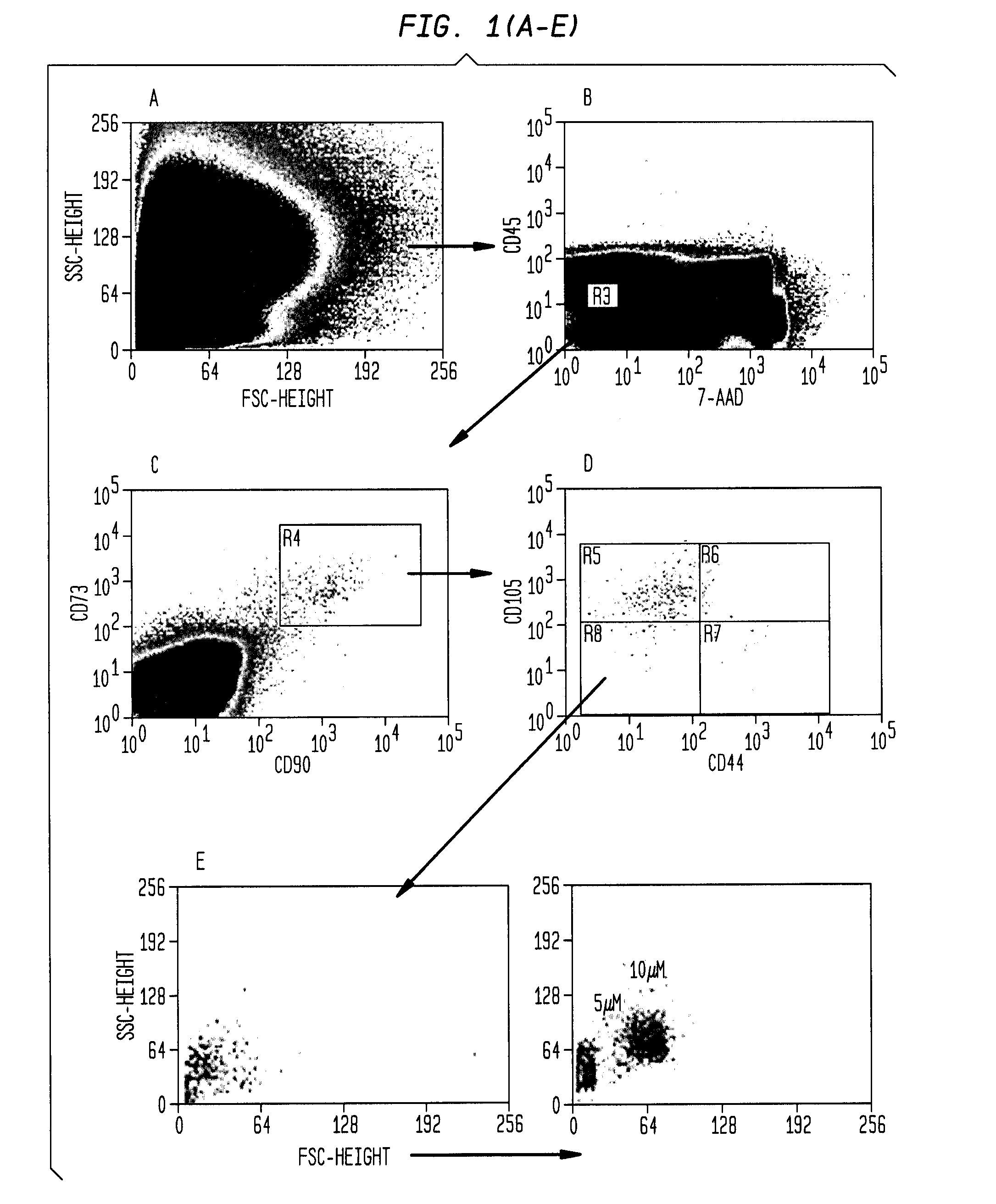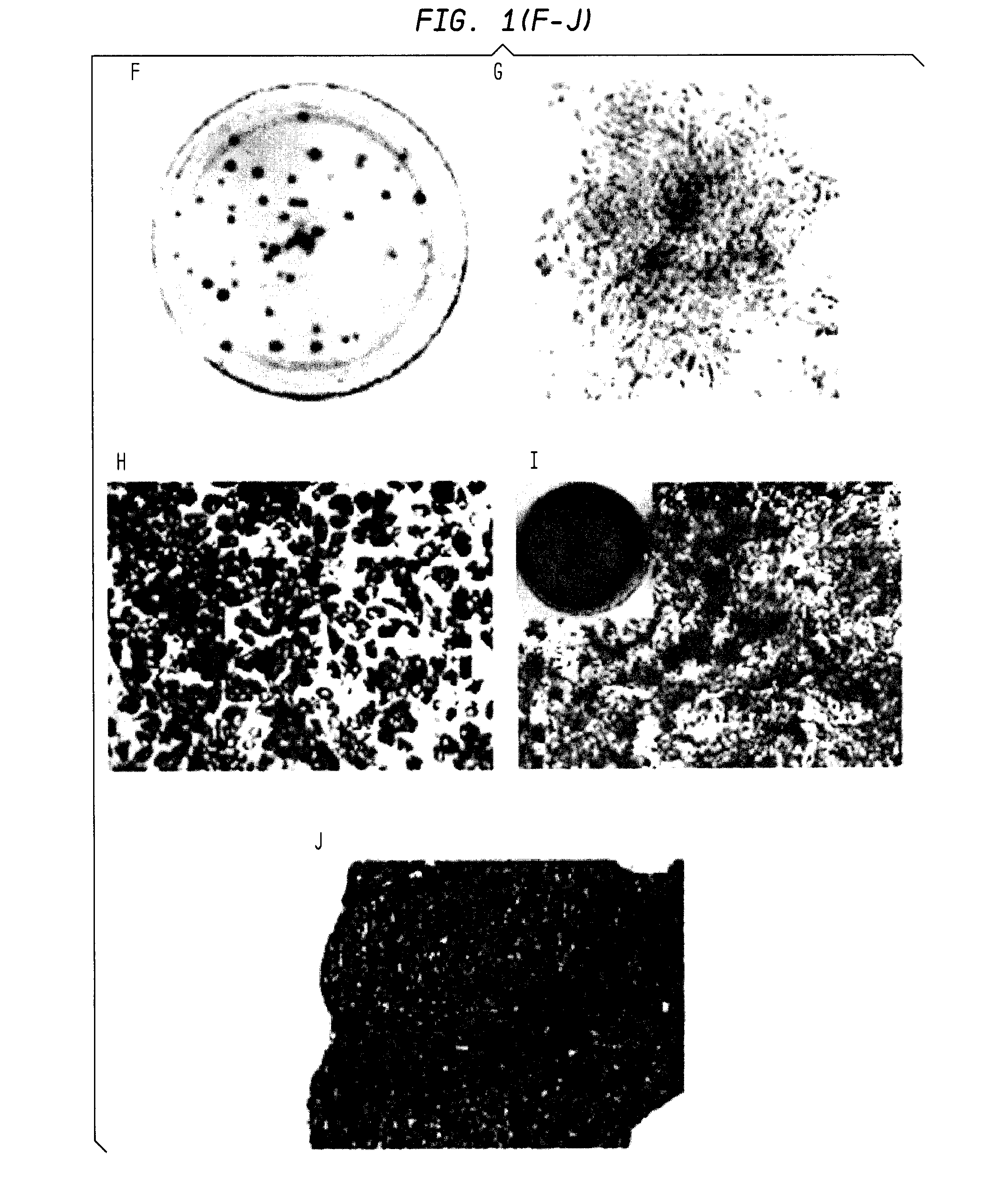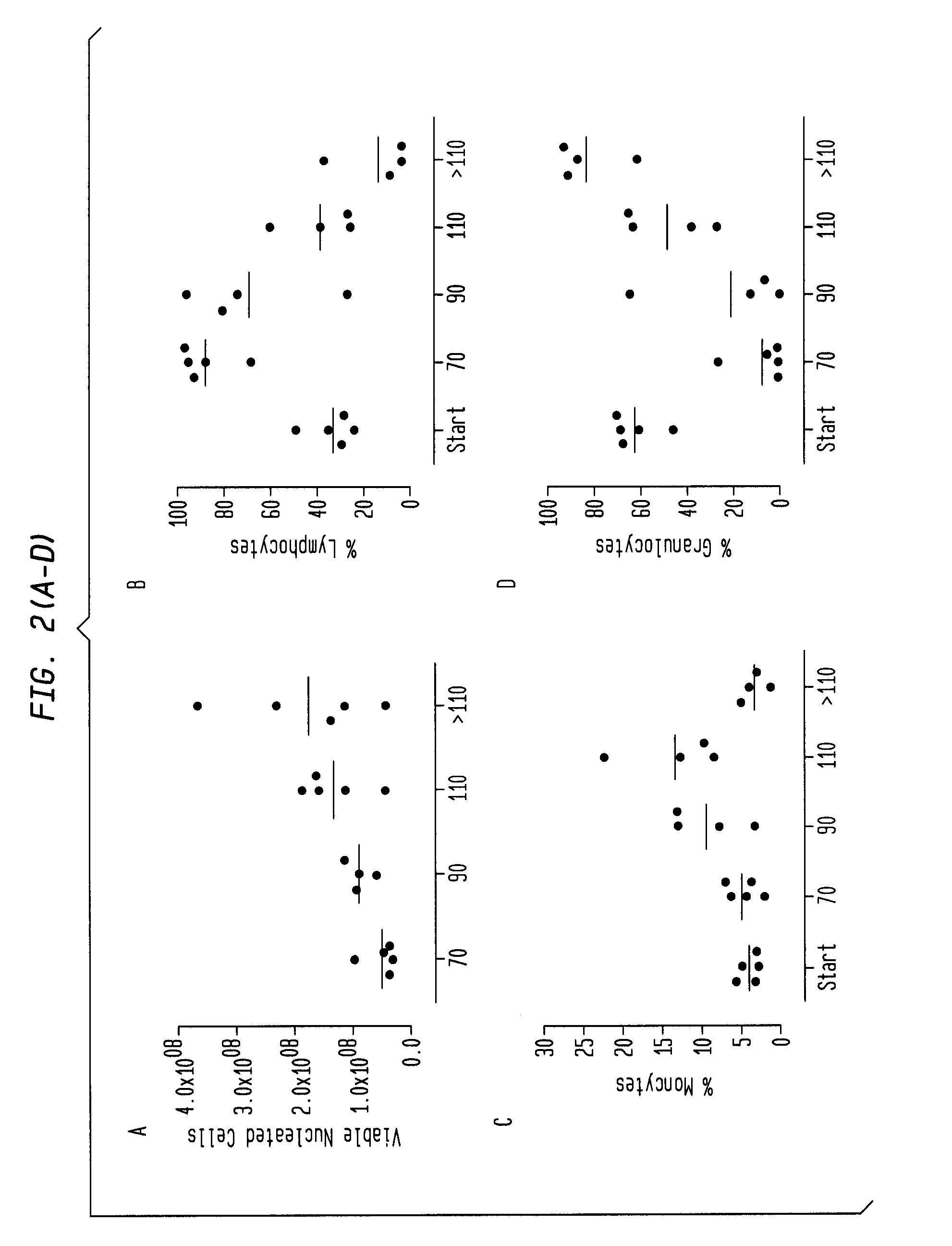Adult mesenchymal stem cell (MSC) compositions and methods for preparing the same
- Summary
- Abstract
- Description
- Claims
- Application Information
AI Technical Summary
Benefits of technology
Problems solved by technology
Method used
Image
Examples
example 1
Isolation of CD34(−) / CD133(−) / CD44(−) / CD45(−) / CD73(+) / CD90(+) / CD105(+) Mesenchymal Stem Cells (MSC)
[0212]A morphologically and phenotypically distinct population of mesenchymal stem cells (MSC), which lacks expression of the classic MSC marker CD44, and which exhibits a physical size that is more equivalent to HSCs than the traditional MSCs, has been identified using magnetic cell depletion and polychromatic flow cytometry combined with elutriation.
[0213]Sample Processing
[0214]Fresh, unprocessed bone marrow (BM) was obtained from healthy donors (Lonza, MD). Samples were processed under aseptic conditions. BM was diluted 1:1 in DPBS (without Ca2+ and Mg2+), followed by RBC lysis using Pharm Lyse 1× lysis buffer (BD Pharmingen). After RBC lysis, cells were washed with 0.5% human serum albumin (HSA) in DPBS and centrifuged at 680 g for 15 minutes at 4° C. Next, cells were counted for viability and resuspended in 0.5% HSA / DPBS and processed for cell isolation. Fresh, mobilized leukapher...
example 2
Enrichment of CD34(−) / CD133(−) / CD45(−) / CD73(+) / CD90(+) / CD105(+) / CD44(−) Mesenchymal Progenitor Cells (MSPCs)
[0235]Following isolation of the CD34(−) / CD133(−) / CD45(−) / CD73(+) / CD90(+) / CD105(+) / CD44(−) cell population, the physical size of the isolated MSCs in freshly isolated samples was analyzed. Since conventional MSCs have been defined post-cultivation from an unfractionated mononuclear population, it has not been possible to determine the physical size of MSCs. Post-cultivation MSCs, which are isolated via conventional methods using Ficoll / Plastic adherence, are large fibroblast-like cells. However, backgating of the FACS-sorted CD45− / CD73+ / CD90+ / CD105+ / CD44− cells onto the SSC / FSC density plot revealed the location of these rare cells in a region near the lymphocyte population, i.e., populations representing small cell size (FIG. 1E, left plot), and further, microbeads of standard size showed that the CD44− cells were between 5 and 12 microns (FIG. 1E, right plot).
[0236]Ficoll ha...
example 3
Expandability and Differentiation Potential of the FACS-sorted MSPCs Expandability
[0246]The CD34 / CD133 depleted, CD45(−) / CD73(+) / CD90(+) / CD105(+) / CD44(−) cells are expandable in a chemically defined growth medium (e.g., MSCGM-CD, TheraPEAK™, Cat #00190632), Lonza®), which is devoid of animal proteins. After expansion, the cells can be cultured in chemically defined conditions to generate differentiated cells.
[0247]For example, the FACS-sorted CD44(−) cells are plated in a chemically defined medium that is devoid of animal serum (which contains proteins that promote adherence) and maintained in culture for 5 days without changing media. Under this condition, adherent cells are not evident until 5-8 days post culture. In contrast, according to the conventional method, which relies on seeding an impure mononuclear fraction to isolate adult BM-derived MSCs, non-adherent cells are removed and adherent cells are thought to give rise to MSCs after 72 hours. Further, their antigen expressio...
PUM
 Login to View More
Login to View More Abstract
Description
Claims
Application Information
 Login to View More
Login to View More - R&D
- Intellectual Property
- Life Sciences
- Materials
- Tech Scout
- Unparalleled Data Quality
- Higher Quality Content
- 60% Fewer Hallucinations
Browse by: Latest US Patents, China's latest patents, Technical Efficacy Thesaurus, Application Domain, Technology Topic, Popular Technical Reports.
© 2025 PatSnap. All rights reserved.Legal|Privacy policy|Modern Slavery Act Transparency Statement|Sitemap|About US| Contact US: help@patsnap.com



